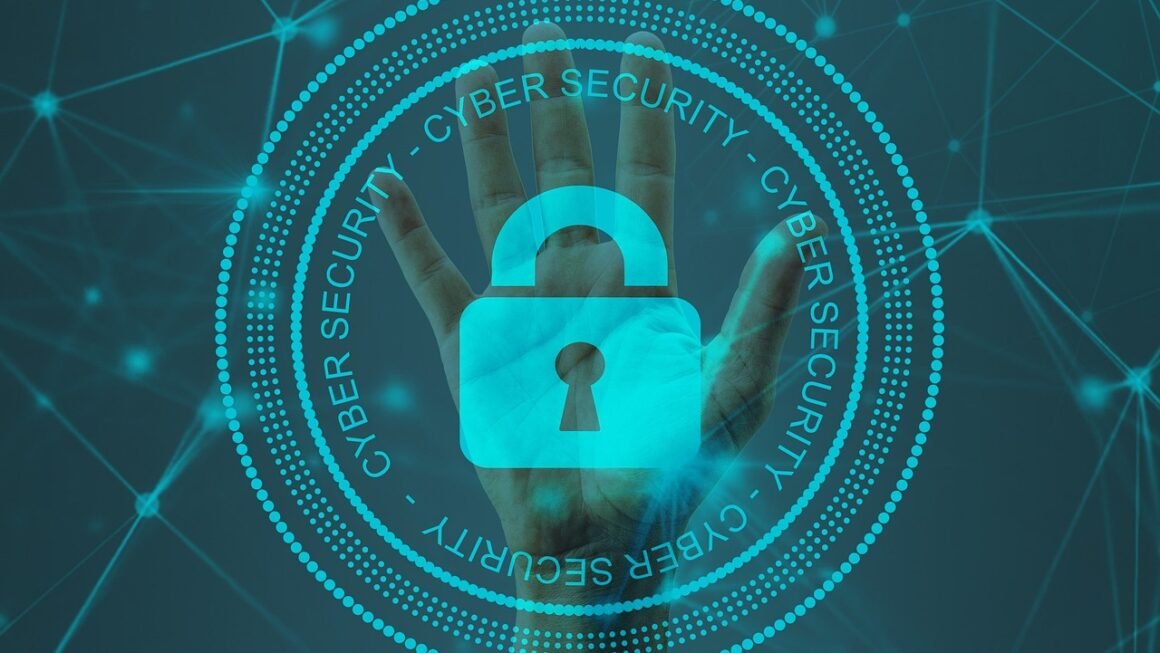Every day, your employees connect to the company network from an array of devices – laptops, smartphones, tablets, and more. These endpoints, while crucial for productivity, also represent a significant attack surface for cybercriminals. A robust endpoint security strategy is no longer optional; it’s a necessity for safeguarding your sensitive data and maintaining business continuity. This post will delve into the world of endpoint security, exploring its key components, benefits, and best practices.
What is Endpoint Security?
Defining Endpoint Security
Endpoint security refers to the practice of securing devices – or endpoints – that connect to a network. These endpoints can include laptops, desktops, smartphones, tablets, servers, and even IoT devices. The goal of endpoint security is to prevent malicious actors from gaining access to these devices and, subsequently, the network and sensitive data they connect to.
Why is Endpoint Security Important?
The importance of endpoint security cannot be overstated in today’s threat landscape. Here’s why:
- Increased Attack Surface: The proliferation of devices accessing the network drastically increases the potential entry points for cyberattacks.
- Remote Work: With the rise of remote work, more endpoints are located outside the traditional network perimeter, making them more vulnerable. For example, an employee connecting from a public Wi-Fi network on an unpatched laptop presents a considerable risk.
- Data Breaches: A successful endpoint attack can lead to data breaches, resulting in significant financial losses, reputational damage, and legal repercussions. According to the 2023 Cost of a Data Breach Report by IBM, the global average cost of a data breach is $4.45 million.
- Compliance: Many industries are subject to regulations requiring robust data protection measures, including endpoint security. Failure to comply can result in hefty fines. Examples of regulations include HIPAA, PCI DSS, and GDPR.
Understanding the Evolution of Endpoint Security
Endpoint security has evolved from basic antivirus software to comprehensive suites of tools and technologies. Traditional antivirus solutions primarily focused on signature-based detection of known malware. Modern endpoint security, however, leverages advanced technologies like:
- Endpoint Detection and Response (EDR): Provides real-time monitoring, threat detection, and automated response capabilities.
- Next-Generation Antivirus (NGAV): Employs machine learning, behavioral analysis, and other advanced techniques to detect and prevent both known and unknown malware (zero-day threats).
- Data Loss Prevention (DLP): Prevents sensitive data from leaving the organization’s control.
- Firewall: Controls network traffic to and from endpoints.
- Vulnerability Management: Identifies and remediates vulnerabilities on endpoints.
Key Components of a Robust Endpoint Security Strategy
Endpoint Protection Platform (EPP)
An Endpoint Protection Platform (EPP) is the foundation of endpoint security. It provides a centralized solution for preventing, detecting, and responding to threats on endpoints. Key features of an EPP include:
- Antivirus/Antimalware: Detects and removes viruses, worms, Trojans, and other malicious software. Modern AV solutions are often signature-less, using AI and machine learning for behavioral analysis.
- Firewall: Controls network traffic based on predefined rules, preventing unauthorized access.
- Intrusion Prevention System (IPS): Monitors network traffic for malicious activity and blocks suspicious connections.
- Device Control: Allows administrators to control the use of removable media, such as USB drives, to prevent data leakage or malware infection.
- Web Filtering: Blocks access to malicious or inappropriate websites.
Example: Imagine an employee inadvertently downloads a file containing ransomware from a compromised website. The EPP’s web filtering would have ideally blocked access to the malicious website in the first place. Failing that, the real-time antivirus component should detect and block the ransomware before it can encrypt files.
Endpoint Detection and Response (EDR)
Endpoint Detection and Response (EDR) goes beyond traditional prevention by continuously monitoring endpoints for suspicious activity. It provides:
- Real-Time Monitoring: Continuously collects and analyzes endpoint data to detect anomalies and suspicious behavior.
- Threat Intelligence: Leverages threat intelligence feeds to identify known threats and emerging attack patterns.
- Automated Response: Automatically responds to threats by isolating infected endpoints, blocking malicious processes, and removing malware.
- Forensic Analysis: Provides detailed information about security incidents, allowing security teams to investigate and remediate threats effectively.
Example: An attacker gains initial access to a user’s machine via a phishing email. They then attempt to move laterally through the network using stolen credentials. An EDR solution would detect this unusual behavior, flag it to security analysts, and potentially quarantine the affected machine automatically before the attacker can compromise other systems. The forensic analysis capabilities would then allow investigators to understand the attacker’s methods and strengthen defenses against similar attacks in the future.
Data Loss Prevention (DLP)
Data Loss Prevention (DLP) solutions are designed to prevent sensitive data from leaving the organization’s control, whether intentionally or accidentally. DLP solutions can:
- Identify Sensitive Data: Scans endpoints and network traffic to identify sensitive data, such as personally identifiable information (PII), financial data, and intellectual property.
- Monitor Data Movement: Tracks the movement of sensitive data within the organization and prevents it from being copied, printed, or emailed to unauthorized locations.
- Enforce Data Security Policies: Enforces data security policies, such as encrypting sensitive data at rest and in transit.
- Provide Reporting and Auditing: Provides reporting and auditing capabilities to track data security incidents and demonstrate compliance with regulations.
Example: An employee attempts to email a spreadsheet containing customer credit card numbers to their personal email address. A DLP solution would detect the sensitive data and block the email, preventing the data breach. It would also log the incident for review by security personnel.
Benefits of Implementing Endpoint Security
Enhanced Threat Protection
Endpoint security significantly enhances an organization’s ability to protect against a wide range of threats, including malware, ransomware, phishing attacks, and insider threats. By implementing a comprehensive endpoint security solution, organizations can:
- Reduce the risk of data breaches and financial losses.
- Minimize downtime caused by security incidents.
- Protect their reputation and brand image.
Improved Compliance
Many industries are subject to regulations that require organizations to implement robust data protection measures. Endpoint security solutions can help organizations comply with these regulations, such as:
- HIPAA (Health Insurance Portability and Accountability Act)
- PCI DSS (Payment Card Industry Data Security Standard)
- GDPR (General Data Protection Regulation)
By complying with these regulations, organizations can avoid hefty fines and legal penalties.
Increased Productivity
While it might seem counterintuitive, effective endpoint security can increase productivity. By minimizing the risk of malware infections and data breaches, endpoint security helps ensure that employees can work without disruption. Furthermore, automated security measures free up IT staff to focus on more strategic initiatives. For example, automatic patching prevents machines from being vulnerable. By preventing attacks, endpoint security reduces downtime and maximizes efficiency.
Centralized Management and Control
Modern endpoint security solutions provide centralized management and control over all endpoints, allowing IT administrators to:
- Deploy security policies and updates to all endpoints from a central console.
- Monitor the security status of all endpoints in real-time.
- Remotely manage and troubleshoot endpoint issues.
- Generate reports on endpoint security posture.
Implementing an Effective Endpoint Security Strategy
Assess Your Current Security Posture
Before implementing an endpoint security strategy, it’s essential to assess your current security posture. This includes:
- Identifying your critical assets and data.
- Evaluating your existing security controls.
- Conducting a risk assessment to identify potential vulnerabilities.
Choose the Right Solutions
Select endpoint security solutions that meet your specific needs and budget. Consider factors such as:
- The size and complexity of your organization.
- The types of endpoints you need to protect.
- Your compliance requirements.
- Your IT resources and expertise.
Implement Strong Security Policies
Implement strong security policies to govern the use of endpoints, including:
- Password policies
- Acceptable use policies
- Data security policies
- Bring Your Own Device (BYOD) policies
Provide Security Awareness Training
Educate your employees about endpoint security threats and best practices. This includes:
- Recognizing and avoiding phishing attacks.
- Using strong passwords and keeping them secure.
- Protecting sensitive data.
- Reporting suspicious activity.
Regularly Patch and Update Software
Ensure that all software on endpoints is regularly patched and updated to address known vulnerabilities. Automated patching solutions can help streamline this process.
Monitor and Respond to Security Incidents
Continuously monitor endpoints for suspicious activity and respond promptly to security incidents. Implement an incident response plan to guide your response efforts.
Example: A key element of a successful security awareness program is simulating phishing attacks. Periodically send fake phishing emails to employees to test their ability to identify and report them. Provide immediate feedback and training to those who fall for the simulated attack.
Future Trends in Endpoint Security
AI and Machine Learning
AI and machine learning are playing an increasingly important role in endpoint security. These technologies can be used to:
- Detect and prevent advanced threats that evade traditional security measures.
- Automate security tasks, such as threat hunting and incident response.
- Improve the accuracy of threat detection and prevention.
Cloud-Based Endpoint Security
Cloud-based endpoint security solutions offer several advantages, including:
- Scalability and flexibility.
- Reduced infrastructure costs.
- Centralized management and control.
- Improved threat intelligence sharing.
Zero Trust Security
Zero Trust is a security model that assumes that no user or device should be trusted by default. This means that all users and devices must be authenticated and authorized before being granted access to network resources. Zero Trust principles are increasingly being applied to endpoint security to improve security posture.
Conclusion
Securing your endpoints is an ongoing process that requires a proactive and multi-layered approach. By understanding the key components of endpoint security, implementing a comprehensive strategy, and staying up-to-date on the latest threats and technologies, you can significantly reduce your risk of cyberattacks and protect your sensitive data. Investing in a robust endpoint security solution is not just about protecting your technology; it’s about protecting your business, your reputation, and your future.



